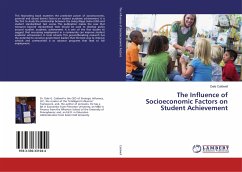
Factors which influence teachers' decisions on
becoming teacher leaders
Versandkostenfrei!
Versandfertig in 6-10 Tagen
32,99 €
inkl. MwSt.

PAYBACK Punkte
16 °P sammeln!
The principal can no longer be the sole instructional leader in schools today because there are many other responsibilities the principal now has in addition to instructional leadership. Principals are faced with higher accountability mandates such as No Child Left Behind, making AYP (adequate yearly progress), and additional non-instructional tasks which takes time away from the curriculum and instruction aspects of the principal job. To compensate and create a strong academic community there needs to be teacher leaders. This leads to the following two questions; 1) How can teacher leadership...
The principal can no longer be the sole instructional leader in schools today because there are many other responsibilities the principal now has in addition to instructional leadership. Principals are faced with higher accountability mandates such as No Child Left Behind, making AYP (adequate yearly progress), and additional non-instructional tasks which takes time away from the curriculum and instruction aspects of the principal job. To compensate and create a strong academic community there needs to be teacher leaders. This leads to the following two questions; 1) How can teacher leadership be increased in schools? and 2) Why do teachers become leaders? These questions led to the purpose of this study which was to identify and describe the positive and negative factors that influence teacher leadership.












